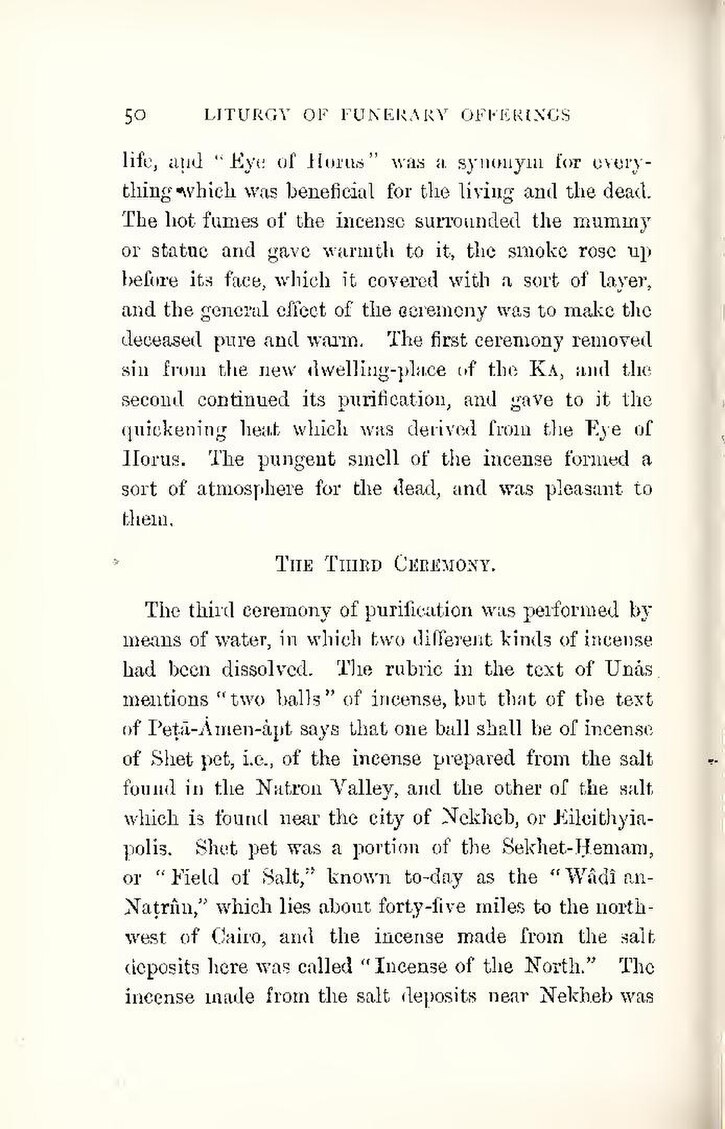life, and “Eye of Horus” was a synonym for everything which was beneficial for the living and the dead. The hot fumes of the incense surrounded the mummy or statue and gave warmth to it, the smoke rose up before its face, which it covered with a sort of layer, and the general effect of the ceremony was to make the deceased pure and warm. The first ceremony removed sin from the new dwelling-place of the Ka, and the second continued its purification, and gave to it the quickening heat which was derived from the Eye of Horus. The pungent smell of the incense formed a sort of atmosphere for the dead, and was pleasant to them.
The Third Ceremony.
The third ceremony of purification was performed by means of water, in which two different kinds of incense had been dissolved. The rubric in the text of Unȧs mentions “two balls” of incense, but that of the text of Peṭā-Ȧmen-ȧpt says that one ball shall be of incense of Shet pet, i.e., of the incense prepared from the salt found in the Natron Valley, and the other of the salt which is found near the city of Nekheb, or Eileithyiapolis. Shet pet was a portion of the Sekhet-Ḥemam, or “Field of Salt,” known to-day as the “Wâdî an-Naṭrûn,” which lies about forty-five miles to the north-west of Cairo, and the incense made from the salt deposits here was called “Incense of the North.” The incense made from the salt deposits near Nekheb was
